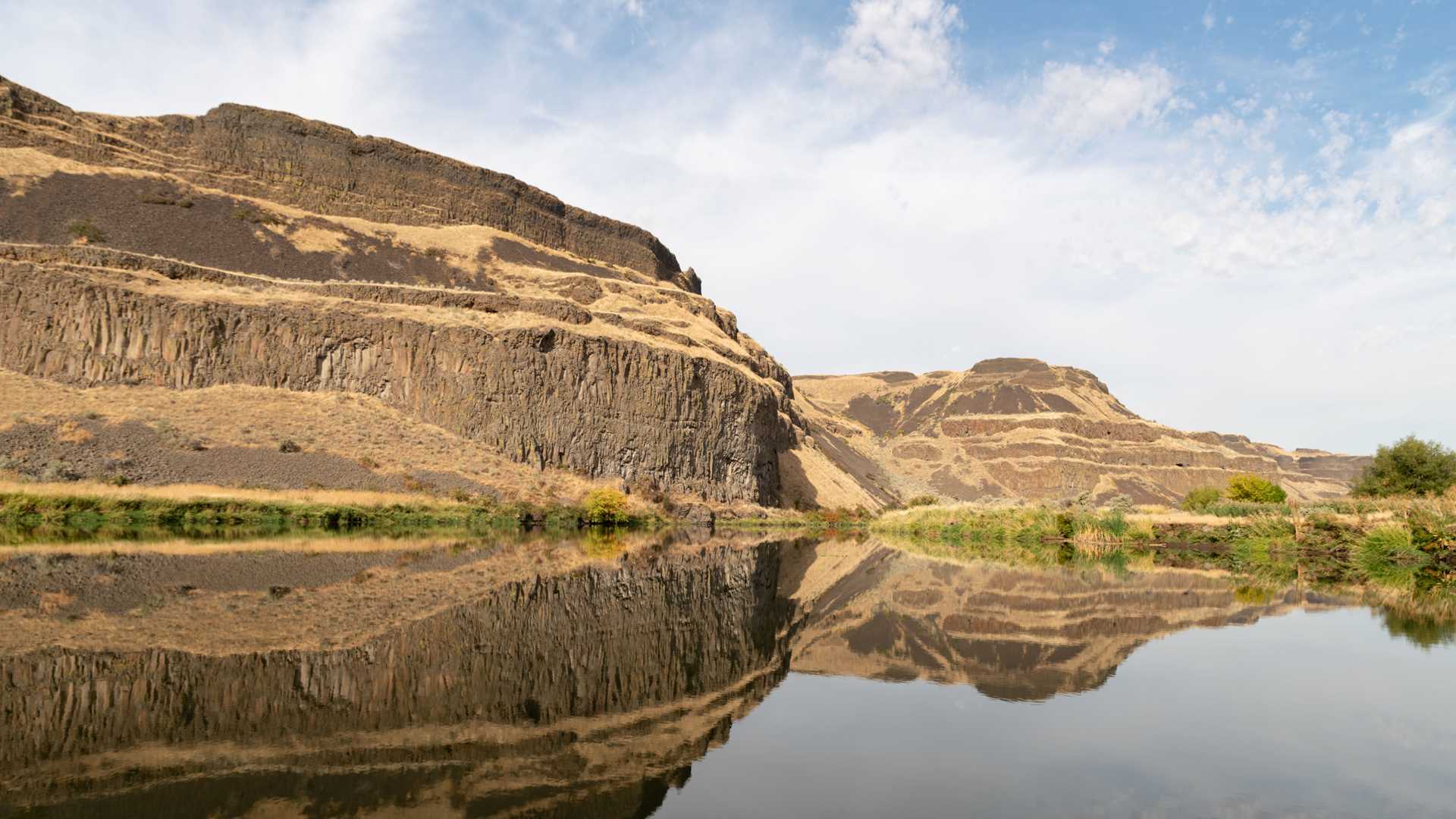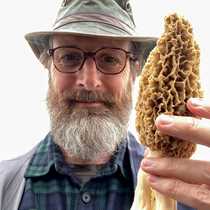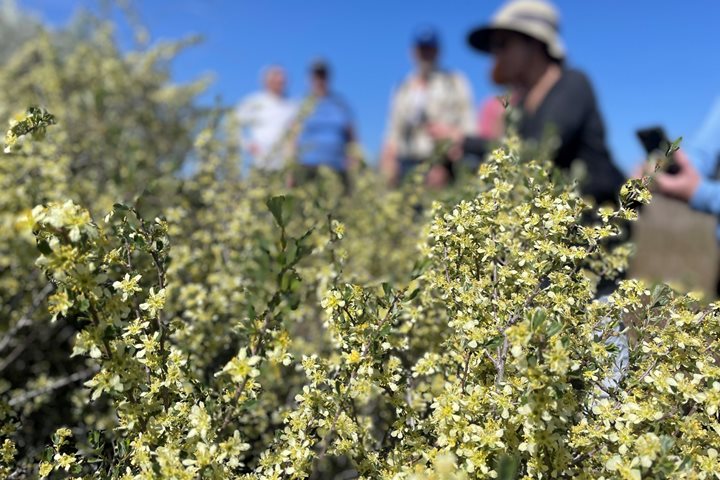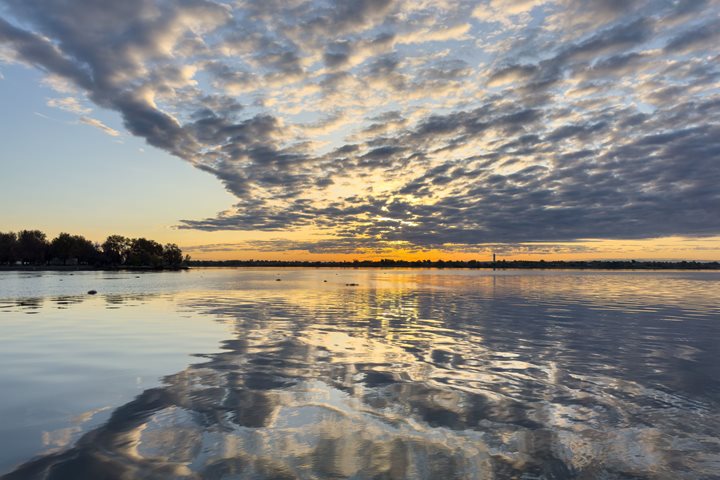The air is warm and still, the water a perfect mirror, as we emerge from the cattails and turn up the Palouse River. Five miles upstream, Palouse Falls pours two hundred feet from its bed in the sage steppe, through a shallow vee eroded in the basalt escarpment, into a nearly round plunge pool below. From there, the river winds its way, tumbling down shallow cascades through an ever-widening canyon until it is finally stagnated into the mirrored surface we are slowly motoring through.
Later, we will board a bus to explore the falls from above, but for now we are taking our time, motoring our way upstream as far as we can go. Rock doves––known commonly as pigeons in the city––make their home in these cliffs. Their iridescent feathers flash greens and purples as they flush in small flocks from high ledges, perhaps spooked by a red-tailed hawk, peregrine falcon, or even the golden eagle we see soaring just above the canyon rim.
Much closer to the water, a raccoon climbs down to a low ledge and into a small alcove in the rock. It is late morning, an unusual time to see one of these usually nocturnal or crepuscular animals. We wonder what has kept her out so long past her normal bedtime.
A mile upriver, we shut off the engine and sit silently, listen to song sparrows, flickers, and a pheasant, all out of sight, but ever vocally present. Aside from this occasional avian chorus, everything is quiet, and we are reluctant to break the silence, but lunchtime is approaching.
Following our silent reflection, we slip back downstream, past a skittish great blue heron, and back into the narrow path through the cattails. A muskrat with a mouth full of cattail leaves slips under the water just in front of our boat, and a pair of eared grebes dive repeatedly, seemingly unconcerned about our noisy presence.
As we reemerge into the open slough at the mouth of the river, we cruise alongside a rock dam built in the sixties to protect a rock shelter, home to a 12,000-year-old human skeleton and evidence of over 8,000 years of human habitation. This forty-foot-wide, twenty-five-foot-deep shelter is underwater due to a miscalculation about the bedrock.
It turns out that volcanic rock can be quite porous, and water seeped under the dam as soon as rising water behind the Lower Monumental Dam reached the Palouse. As a result, one of the most important archeological sites in North America might never be fully excavated.
As we cruise back to the ship, a bald eagle looks down on us from high on a basalt cliff. I can’t help but think that so many generations ago, another bald eagle, perhaps an ancestor of this one, looked down on a very different river–one wild and free, not slowed by dams and teeming with wild salmon as people lived and thrived here at the confluence of these great rivers.







